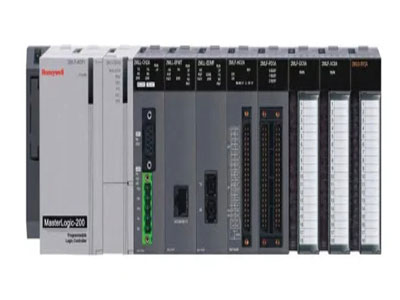What Is Scan Cycle In PLC?
Key Takeaway
A scan cycle in a PLC is the process the PLC follows to read inputs, execute the control program, and update outputs. It consists of three main steps: input scan, program execution, and output scan. During the input scan, the PLC reads the status of all input devices. Next, in the program execution step, the PLC runs the control logic based on the input statuses. Finally, during the output scan, the PLC updates the status of all output devices according to the executed program. This cycle repeats continuously, ensuring real-time control and monitoring of the automated system. Understanding the scan cycle is crucial for designing efficient PLC programs and troubleshooting issues effectively.
Definition and Purpose of Scan Cycle
The scan cycle is the repetitive process that a Programmable Logic Controller (PLC) follows to read inputs, execute logic, and update outputs. This fundamental operation allows PLCs to monitor and control automated industrial processes continuously. The primary purpose of the scan cycle is to ensure that the PLC responds to input conditions in a timely manner and executes actions that are reflective of the current state of the system, thus maintaining efficiency and safety in automated operations.

Phases of a PLC Scan Cycle
The scan cycle of a PLC, comprising three essential phases, orchestrates the seamless execution of control logic and the synchronization of input and output operations within industrial automation systems. Firstly, during the input scan phase, the PLC diligently reads the status of input devices connected to its input modules, ensuring it captures the real-world conditions accurately. Following this, in the program scan phase, the PLC delves into the heart of its operations, executing the meticulously crafted user-defined control logic stored within its memory. This phase embodies the intelligence of the PLC, where it processes input data, evaluates conditions, and makes decisions based on the programmed instructions. Finally, in the output scan phase, the PLC translates the outcomes of the program scan into actionable commands, updating the status of output devices accordingly. This phase marks the culmination of the PLC’s decision-making process, as it orchestrates the control signals to regulate actuators, motors, and other output devices, thus influencing the physical processes in the industrial environment.
You May Like to Read
Factors Affecting Scan Cycle Time
The scan cycle time of a PLC, a crucial metric in industrial automation, hinges on various factors that collectively influence its performance and responsiveness within manufacturing environments. Firstly, the complexity of the control logic programmed into the PLC directly impacts the duration of each scan cycle. Intricate logic sequences or extensive conditional branching can prolong processing times as the PLC evaluates multiple instructions. Furthermore, the number of input and output devices connected to the PLC significantly affects scan cycle time, with larger systems necessitating more time for data acquisition and output generation. Additionally, the inherent processing capabilities of the PLC’s CPU play a pivotal role, as higher-powered processors can execute instructions more swiftly, reducing scan cycle durations. Moreover, external factors such as communication latency with peripheral devices and network congestion can introduce delays, impeding the PLC’s ability to complete scan cycles promptly. By understanding and optimizing these factors, engineers can fine-tune PLC performance to meet the demands of dynamic industrial processes efficiently.
Optimizing Scan Cycle Performance
Optimizing scan cycle performance is crucial for ensuring the efficiency and responsiveness of PLCs in industrial settings. Engineers can adopt several strategies to enhance scan cycle performance effectively. Firstly, simplifying control logic by minimizing the use of complex instructions and reducing conditional branching can streamline processing and shorten scan cycle times. Additionally, optimizing I/O configurations by grouping related inputs and outputs and minimizing signal conversion overhead can improve data acquisition efficiency. Moreover, selecting PLCs equipped with faster processors and ample memory can expedite program execution and enhance overall system performance. Furthermore, minimizing communication overhead by using efficient communication protocols and reducing network latency through network optimization techniques can contribute to faster scan cycle times, particularly in networked PLC systems. By implementing these optimization strategies, engineers can ensure that PLCs operate with optimal efficiency, meeting the stringent demands of modern industrial automation while maximizing productivity and reliability.
Troubleshooting Scan Cycle Issues
When scan cycle issues arise in PLC systems, troubleshooting becomes paramount for maintaining smooth operation. Engineers must approach these issues systematically, employing a series of diagnostic techniques to pinpoint and resolve underlying problems. These issues may manifest as prolonged scan cycle times, erratic behavior in control logic execution, or discrepancies in input and output status updates. To address these challenges, engineers analyze program logic to identify potential bottlenecks or errors that could impede scan cycle efficiency. Monitoring scan times and observing system behavior can provide valuable insights into performance issues, allowing for targeted troubleshooting. Additionally, diagnosing communication errors, such as network congestion or hardware malfunctions, is crucial for restoring PLC functionality. By utilizing these troubleshooting strategies effectively, engineers can ensure the reliability and efficiency of PLC systems, minimizing downtime and optimizing industrial processes for enhanced productivity.
Conclusion
In conclusion, the scan cycle is a fundamental concept in PLC programming and operation, representing the cyclical process through which a PLC executes control logic and updates I/O statuses. By comprehending the phases of the scan cycle, understanding factors influencing scan cycle performance, and implementing optimization techniques, engineers can ensure the efficient operation of PLC systems in industrial automation applications. Additionally, effective troubleshooting of scan cycle issues is essential for maintaining system reliability and minimizing downtime, underscoring the importance of a thorough understanding of the PLC scan cycle.
